If your Windows 10 has run into errors or isn't working as expected, you can try reinstalling it. One of the most common ways to install Windows 10 is via a bootable USB drive. Do you know how to install Windows 10 from USB from BIOS? Whichever your answer is, this article from EaseUS shall give a detailed guide on how to do that.
First, we'll show the requirements you need to fulfill for a successful Windows 10 installation from USB. You'll also learn about an efficient tool called EaseUS OS2Go you can use to create a Windows bootable USB drive. Read on to learn how to install Windows 10 from a USB easily.
Can You Install Windows 10 from BIOS from USB
You can't install Windows 10 from BIOS but from a bootable USB drive. However, BIOS is important when installing Windows because it's where you select the boot order for your installation. Once you've connected the bootable USB drive to your computer, BIOS helps recognize the boot files essential for a successful Windows 10 installation.
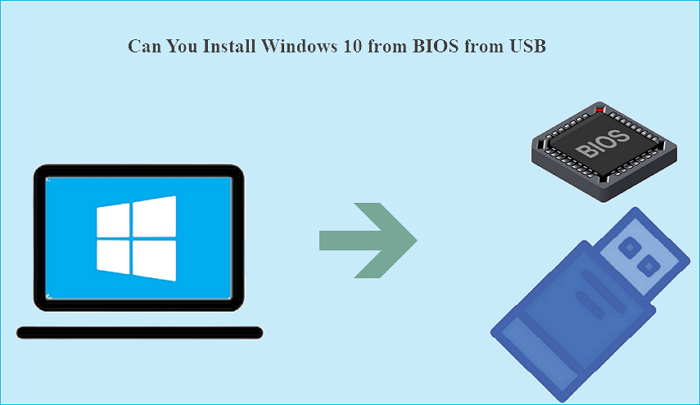
There are specific keys to enter BIOS settings on your computer depending on the model, i.e., Dell, HP, ASUS, Lenovo, MSI, etc. This could vary from pressing ESC, DEL, F2, or F10 keys.
What You'll Need to Install Windows from a USB Drive
You must fulfill the following requirements for a successful Windows 10 installation from a USB drive.
- USB flash drive. Your media USB flash drive should be functional and have a free space of about 8GB.
- Computer with BIOS. This is where you'll be installing the OS. The computer should have a BIOS that supports booting from USB.
- Stable Internet connection. A stable network connection is essential to connect to the Microsoft servers and download the required installation files.
- Create a Windows bootable USB drive. The bootable drive is the one that will contain the ISO files that carry the information of the OS you seek to install. Although you can create a bootable drive using Rufus or a Windows Media Creation tool, it's best to use professional Windows To Go Creator software like EaseUS OS2Go because you do not need to create a bootable USB or download the ISO file manually.
With EaseUS OS2Go, you'll save on the time spent manually creating Windows 10 installation media. This free tool allows you to create the installation drive without ISO. Also, it allows you to bypass the minimal requirements one needs to fulfill before Windows installation. It also lets you install two operating systems on one computer. Here are some highlights of this powerful tool.
EaseUS OS2Go
- Install Windows 10 without a Microsoft account
- Install Windows on Mac without boot camp
- Install Windows 11 without secure boot and TPM
- Clone Windows to a USB as a portable Windows
- Download the Windows 11 23h2 ISO file with ease
What more? This tool allows you to run Windows apps on a Mac device or play Windows games on a Mac computer. Creating a bootable USB drive using EaseUS OS2Go is quite seamless and straightforward. Therefore, ensure you download and start using it today.
Step 1. Install EaseUS OS2Go on your Windows computer. Plug in a USB drive or external hard drive that is large enough.
Step 2. Choose the third tab "Windows Install Drive Creator". First choose the Windows versions you want to install, EaseUS OS2Go supports creating Windows 11/10/8.1 installation media. You could also select a local ISO file. When all set, click "Create".
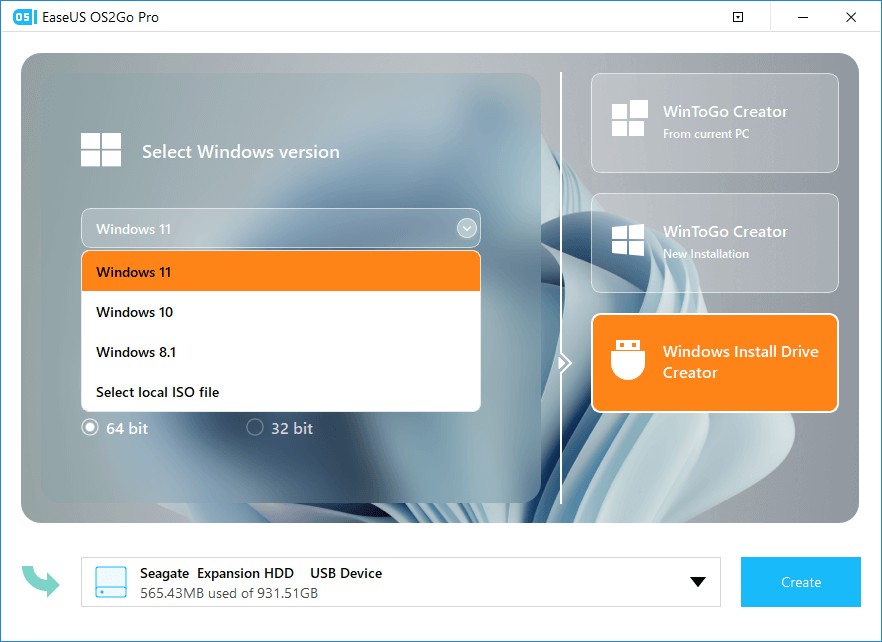
Step 3. Then you will see a safety warning message, telling you that all data on the selected disk will be deleted. Click "Continue" to proceed.
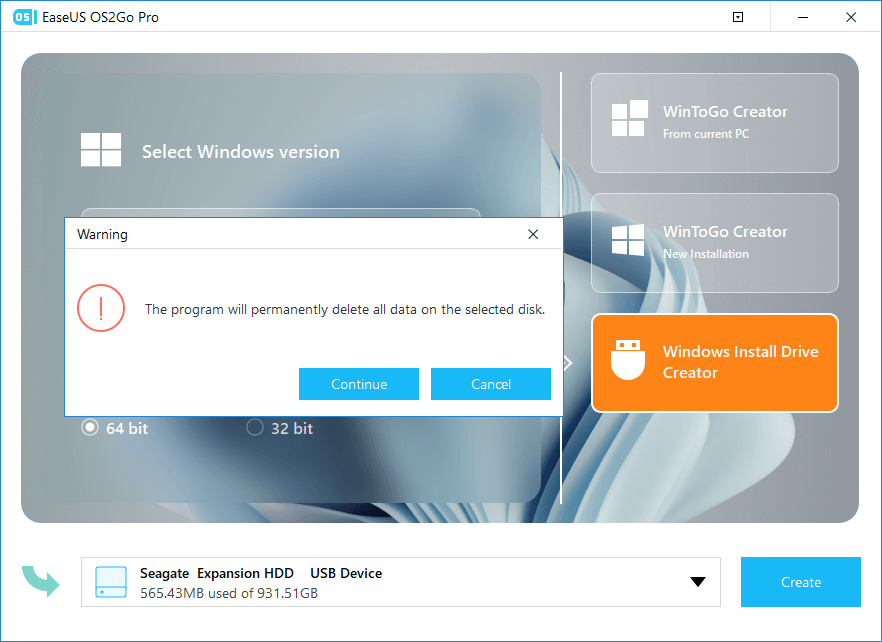
Step 4. Then EaseUS OS2Go will start to create the Windows Installation media. It usually takes a while to download a ISO file, the time it takes depend on your OS and Network condition. When the progress reaches 100%, the USB drive should be bootable now.
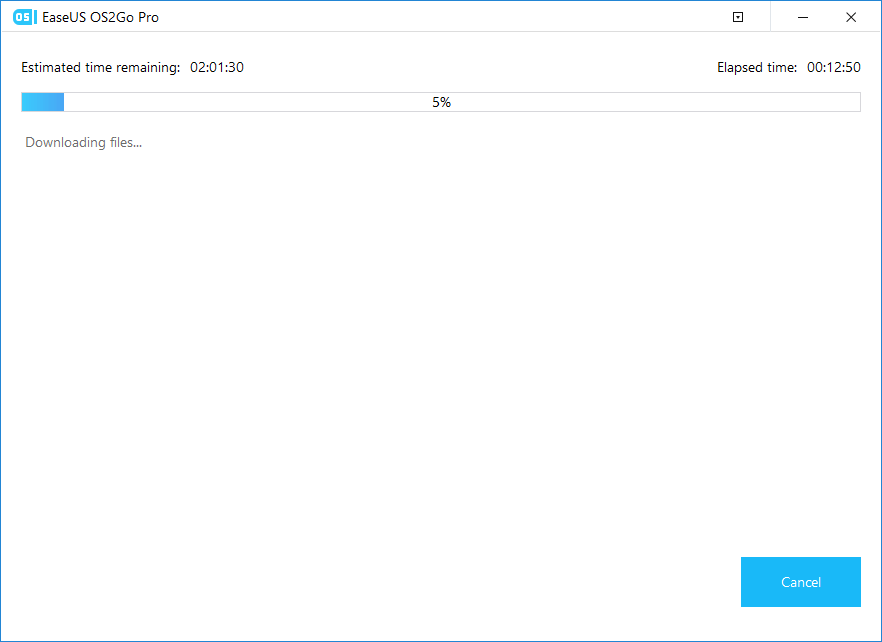
Step 5. Insert the Windows Installation media to your computer and start the installation process.
Is this page useful? If so, share it on your social media to help more people。
How to Install Windows 10 from USB Using BIOS
As discussed previously, you cannot reinstall Windows 10 from BIOS but rather via a bootable USB drive. We’ve divided this section into two parts: 1) How to enter BIOS and 2) How to install Windows 10 from a bootable drive. Read on as we discuss each concept in detail.
Part 1. Enter BIOS to Set USB as Boot Device
The first stage of installing Windows 10 on your PC is entering BIOS to make your bootable drive detectable. To enter BIOS, you must press specific keys on your keyboard when starting your computer. The type of keys to press varies based on your computer model. However, the keys are either one or a combination of ESC, DEL, F2, or F10.
Step 1. Once BIOS has opened, you can access the "Boot menu" by either navigating to the "Advanced" or "System" configuration sections.
Step 2. Select "USB drive" as your primary boot drive. You can do this by pressing the down arrow and hitting Enter to select the USB drive.
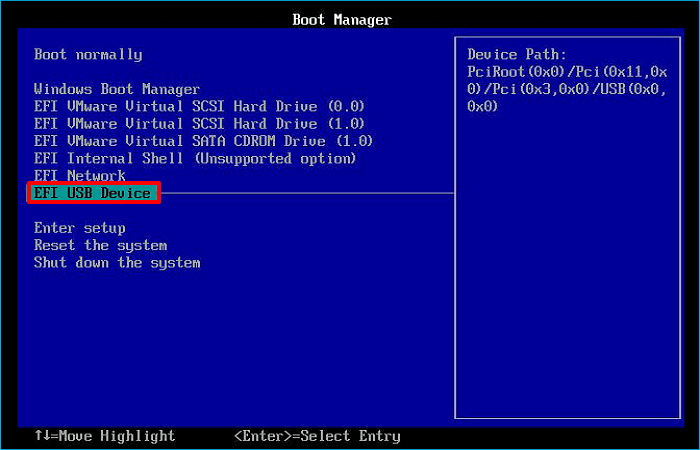
Step 3. Lastly, save your changes and exit the BIOS setup. You can now proceed to the next part to have Windows boot from USB.
Part 2. Install Windows 10
Once you've set your USB drive as the boot device on BIOS, you can follow the steps below to install Windows 10.
Step 1. Insert the bootable USB drive into one of the USB ports on your PC and repeatedly press F9 until the boot menu appears. Next, choose your bootable USB drive to enter Windows Setup and install Windows 10.
Step 2. Once the Windows Setup screen displays, select your preferred language and click Next.
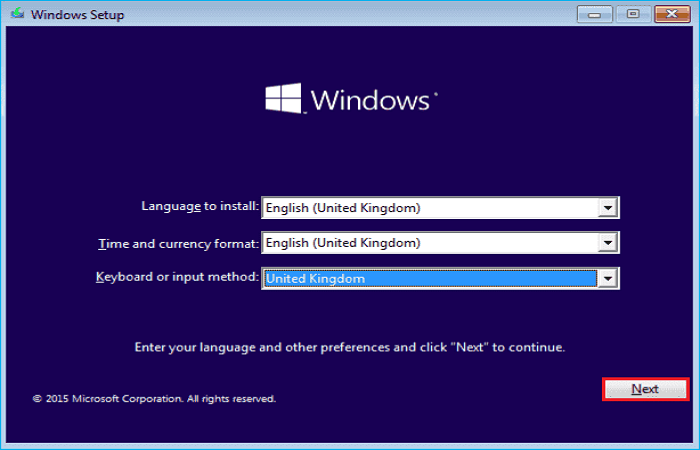
Step 3. In the next screen that displays, click the "Install now" button.
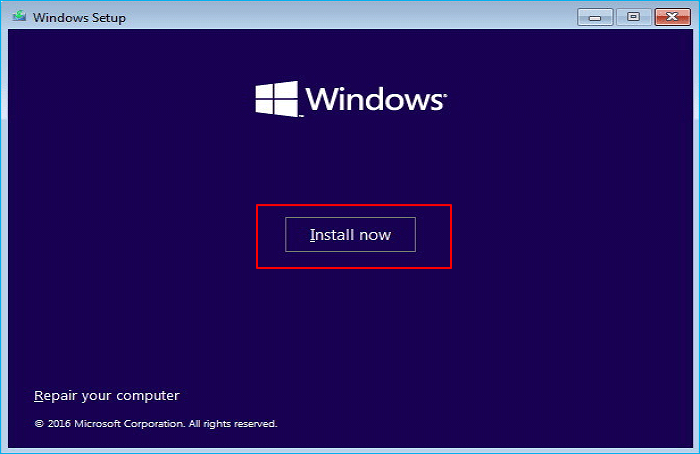
Step 4. When requested for a product key, click on the option for "I don't have a product key."
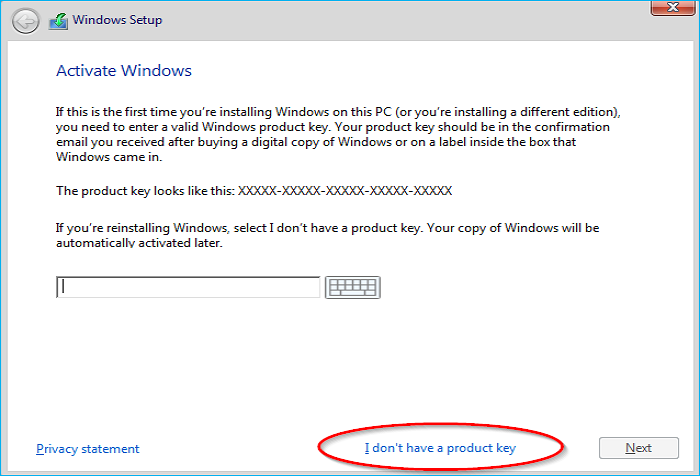
Step 5. Next, check the license terms box and click Next. When asked which installation to choose, select "Custom Install."
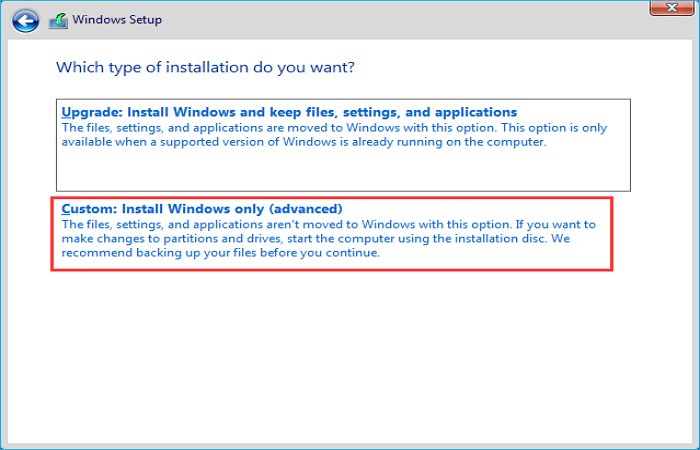
Step 6. Select the drive you want Windows installed on, then click "New", "Apply", and "Next."
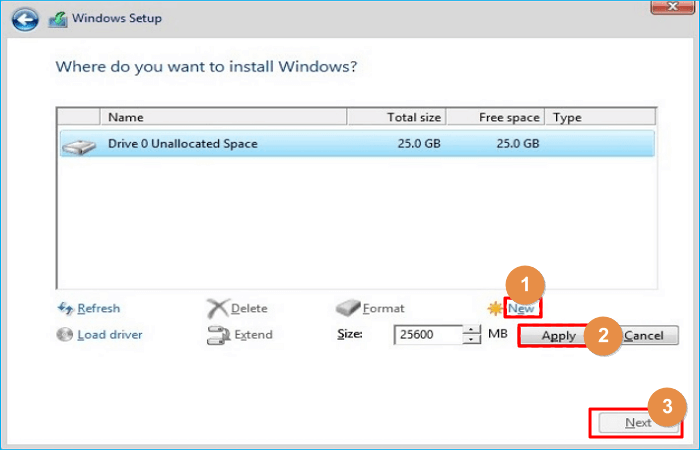
Step 7. You can get new partitions. Choose the primary partition and click Next.
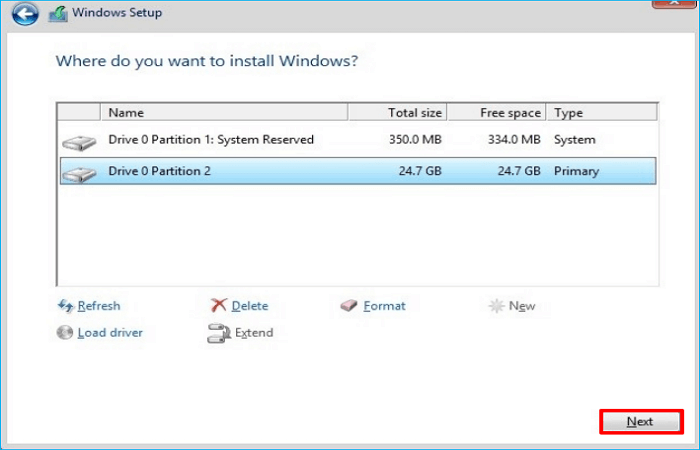
Step 8. Windows 10 will then start installing on the selected drive. Keep monitoring your screen to check the percentage progress of the installation. This could take some time. When everything is done and dusted, you can access your computer afresh with a new operating system.

Troubleshoot: Cannot Install Windows 10 from USB
It's possible to encounter issues when installing Windows 10 from installation media USB flash. Despite that, there exist a couple of fixes you can apply to troubleshoot the problem. First, Windows may fail to install because BIOS has incorrect settings. Therefore, crosscheck and ensure you've set the USB drive as your primary boot.
Second, if you access the boot menu and find your bootable drive isn't listed, yet you have selected it as the primary boot (in BIOS), you can try updating BIOS to the latest version from the device manufacturer's website.
Lastly, Windows may fail to install because of a corrupted USB drive. You can format the drive or use a different one to solve this. Follow these recommended options to troubleshoot any problem with your Windows installation.
To Wrap Things Up
This guide has shown you how to install Windows 10 from USB from BIOS. Some of the requirements you need to fulfill before installing Windows include having a USB drive of at least 8GB, a computer, and a stable internet connection. In addition, you need to create a bootable USB drive.
One of the most recommended professional software to help create a bootable drive is EaseUS OS2Go. This third-party tool will allow you to bypass most of the requirements you must meet before installing Windows 10. Ensure you download it today to check how it works.
FAQs on How to Install Windows 10 from USB from BIOS
Below are commonly asked questions about how to install Windows 10 from USB from BIOS.
1. How to Run Bootable USB from BIOS?
You'll need to set it as the primary boot drive to run bootable USB from BIOS. Follow the steps below:
- Step 1. Press ESC, DEL, F2, or F10, depending on your computer model to enter BIOS.
- Step 2. Access the Boot menu by navigating to the Advanced or System configuration sections.
- Step 3. Next, select your boot mode (Legacy or UEFI) and select the USB drive as your primary boot. Save the changes and click Exit to run bootable USB from BIOS.
2. How to Install Windows 10 on UEFI BIOS?
Follow the steps below to install Windows 10 on UEFI BIOS:
Step 1. Once you enter BIOS setup, navigate to the Boot Options menu.
Step 2. Next, make the following settings to enable UEFI BIOS:
- Launch CSM: Enabled.
- Boot Device Control: UEFI Only.
- Boot from Storage Devices: UEFI driver first.
Step 3. Save the above changes, then restart your system. You can then proceed with the normal process of installing Windows to install from UEFI BIOS.
3. Should I Install Windows 10 in UEFI or BIOS?
You can install Windows 10 in either Legacy or UEFI BIOS boot modes. However, the partition style used when creating your bootable drive determines which mode to use. If you use the GPT partition style, you'll install BIOS in UEFI mode. If the partition style is MBR, you'll have to boot it into Legacy mode.
Was This Page Helpful?
Related Articles
-
How to Play Call of Duty on Your Mac with 3 Methods
![]() Jean/2024-12-06
Jean/2024-12-06 -
How to Install Windows 10 on External Hard Drive Mac
![]() Jean/2024-12-06
Jean/2024-12-06 -
How to Bypass Secure Boot And TPM on Windows 11
![]() Daisy/2024-04-10
Daisy/2024-04-10 -
Is Rufus Safe to Download and Use? Get Answer Here
![]() Larissa/2025-07-02
Larissa/2025-07-02
EaseUS OS2Go
- Create portable Windows to USB
- Copy installed Windows OS to USB
- Clone Winodws OS drive to USB
- Run Windows 11 on any PC
- Run Windows 11 on unsupported PC
- Run Windows 11/10 on a Mac
